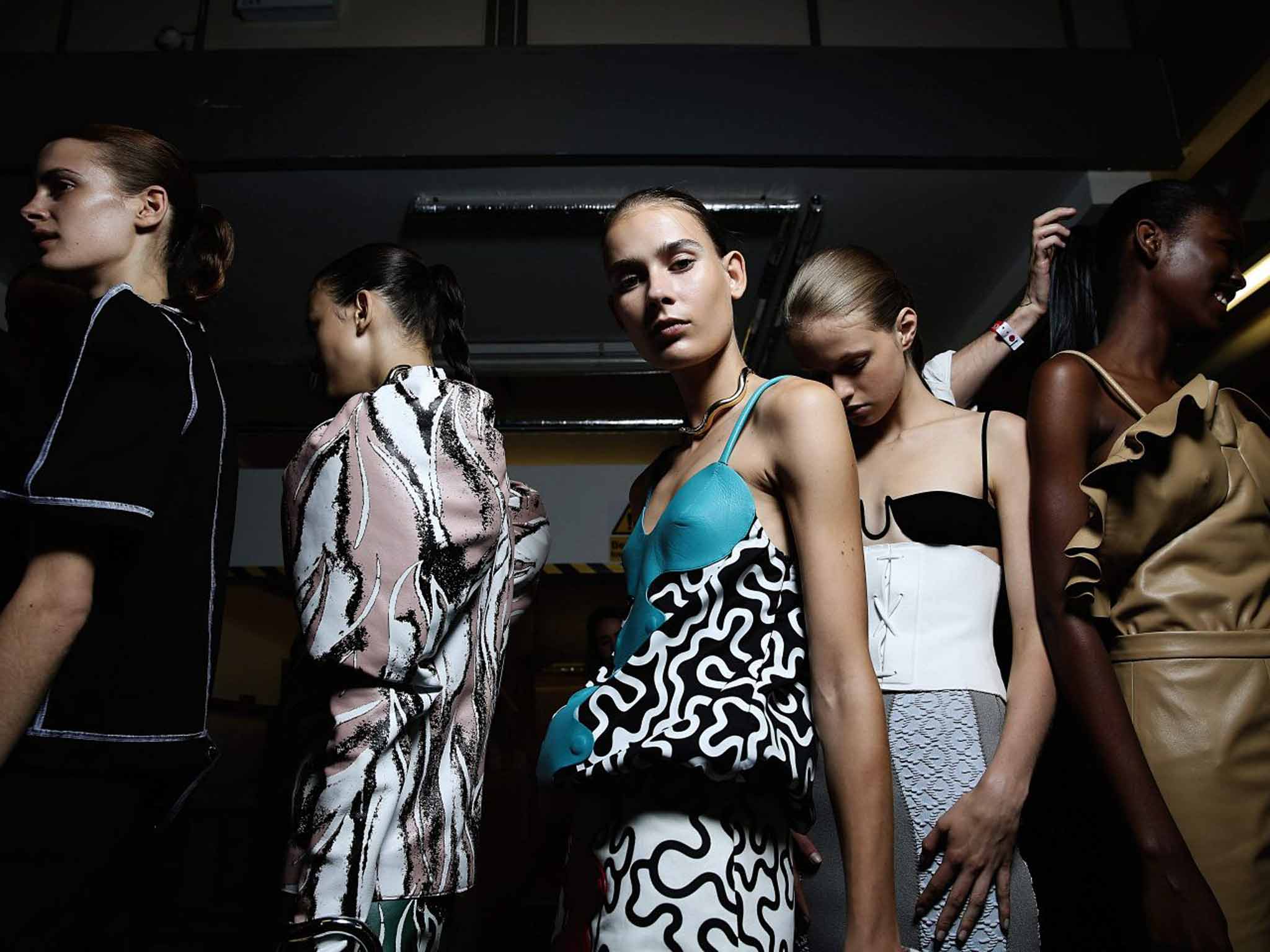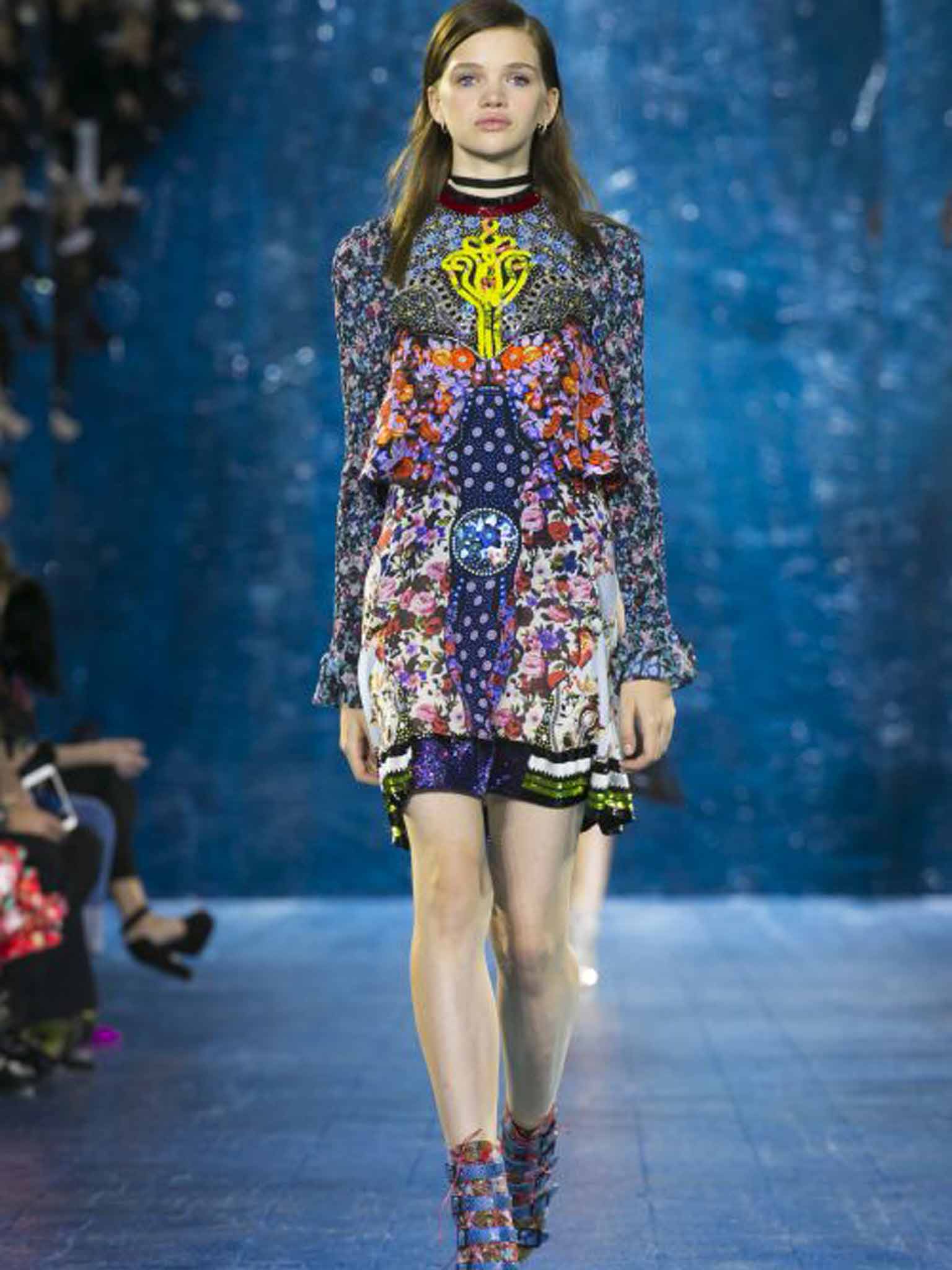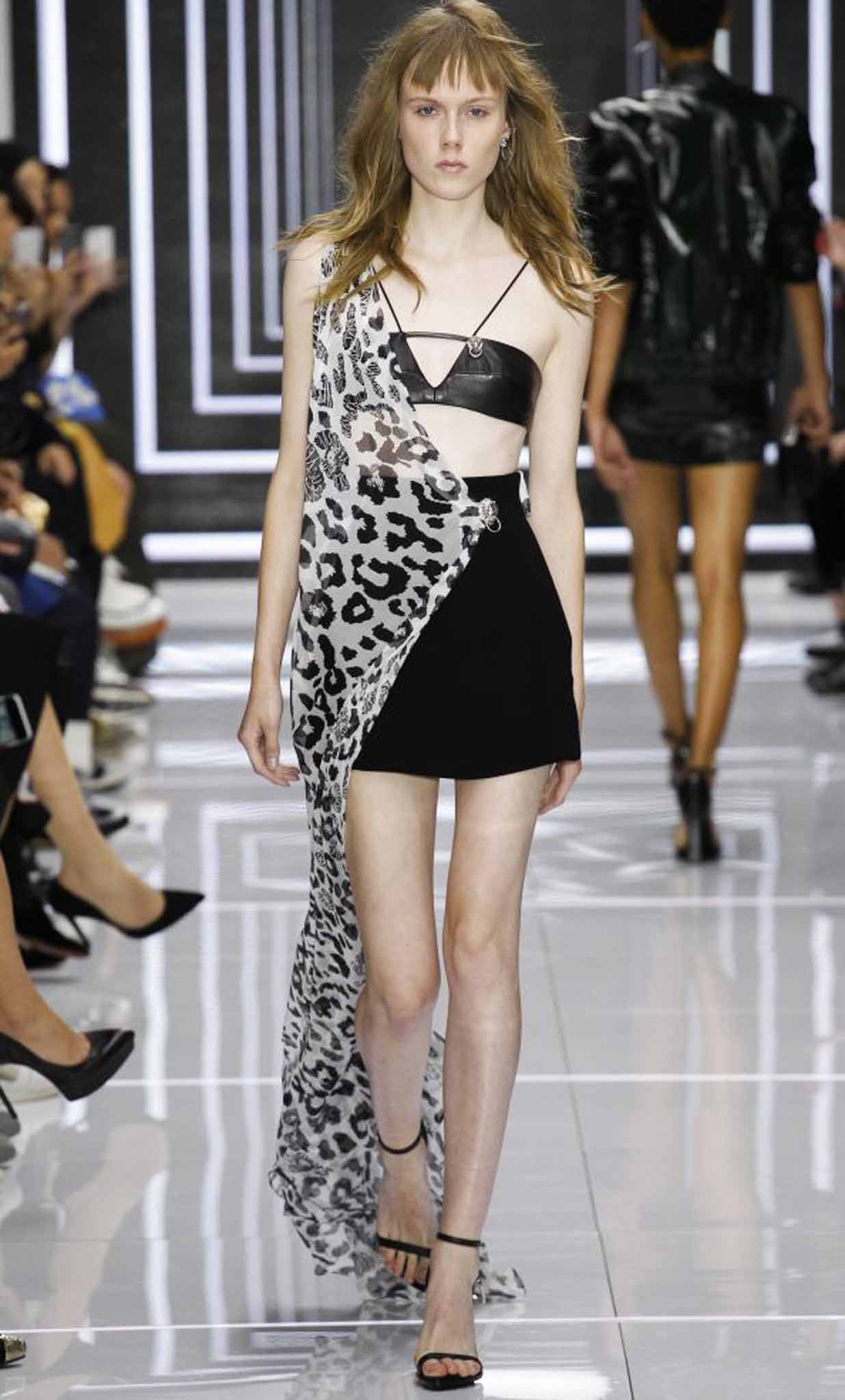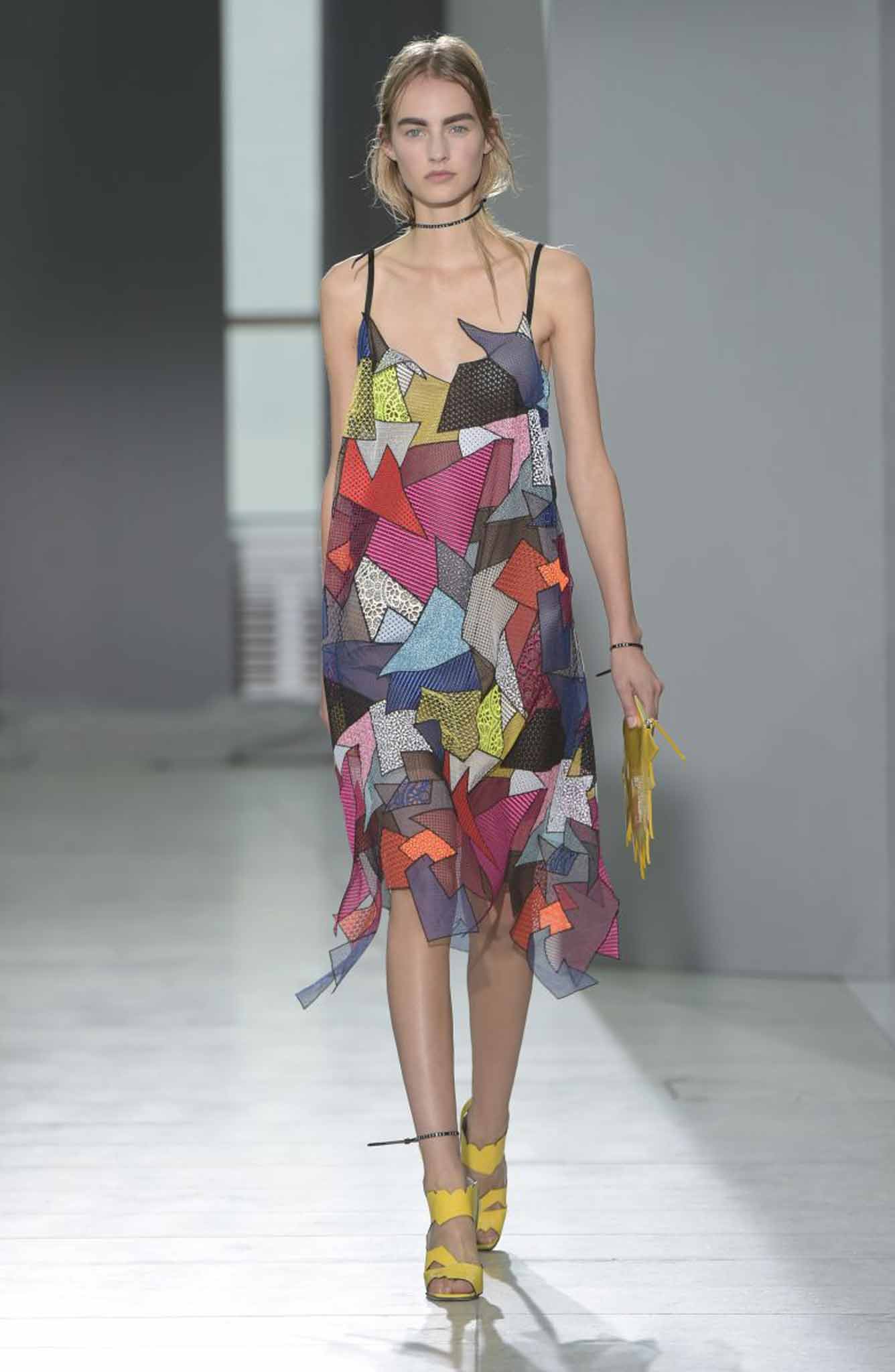Why London Fashion Week may redefine the contemporary fashion landscape: From Mary Katrantzou to Versus Versace
As the best of the capital's spring/ summer 2016 shows closes, London Fashion Week has sloughed off its reputation as the joker in the pack, says Alexander Fury

Is it facetious to say London Fashion Week has grown up, when it's sliding into its fourth decade this year? I don't think so, given that the shows have frequently been marked by a juvenile delinquency, by designers aesthetically sniggering and delivering clothes that seem not only unwearable (which sometimes isn't an issue) but unbuyable (which always is).
Something switched for spring/summer 2016. When you have Anya Hindmarch, London's queen of the visual gag, telling you four days before her show that she's tired of the funny, punny stickers that have made her upwards of £12m in the past year, you know there's a sea change afoot.
It's nice to see designers taking themselves seriously – especially when that includes Hindmarch. She wanted the funny in her show this season to feel "odd" rather than laugh-out-loud, and while those stickers will still be there, they weren't the main story for a collection of reappropriated high street slogans and logos (John Lewis's graphic strips, the Nationwide and Mothercare logos) intricately worked with elaborate inlaid leather, on handbags made by the same factory as Chanel's 2.55. They weren't laughable, though they did make you smile. Hindmarch kicked it up a gear.

So did the rest of the best of London, for spring/summer 2016. Or maybe it's just me that thinks that. The great thing about London is how it divides opinion, with shows being decried and hurrahed in equal measure. Maybe its because, by and large, designers showing here don't have the Damoclean sword of advertising to wield to ensure favourable reviews. Perhaps that's why debate swirled around shows such as JW Anderson's, which would have been cheered if it came with a hefty ad spend, but was instead challenged: do women really want to look like this? Will anyone really wear this? I suspect they do, because it's so definite in what it's doing. Anderson fused Lara Stone's Tomb Raider aggression with overblown Eighties gigot sleeves, short, tight skirts clenching their way up models' thighs, and the occasional exposed brassière. Backstage, he dedicated the show to "a woman's odyssey", but really it was about oddity and, I like to think, about taste. Questioning what constitutes good and bad taste, and how to overturn those notions.
That's the difference between a good designer, and a great one. Which was the issue with the much-feted Erdem Moralioglu. His show was an example of adroit dressmaking, not fashion. There was no attempt to challenge, or to experiment, just very many very pretty dresses, flaccid echoes of the work of Sarah Burton at Alexander McQueen, or the Valentino designers Maria Grazia Chiuri and Pierpaolo Piccioli. Erdem is often dubbed London's Valentino, which sometimes feels like a sideswipe at how familiar his clothes can seem. At their best, they're good, not great. And the same with the designers Roksanda and Emilia Wickstead, the latter showing her best, the former not so much.

Burberry Prorsum isn't really about good design – although Christopher Bailey can do that, and did this season. It's about big-top showmanship. This season, he recruited Alison Moyet to belt out a few greatest hits, a welcome respite from the anodyne newcomers designers have enlisted to warble live with all the energy of piped-in music in a shopping centre lift. The richness of Moyet's voice mimicked the richness of the collection, frogged in gold braid, Burberry trenches in technical silk, studded with faux regimental buttons. That fusion of pomp and practicality was dubbed, by Bailey, "Functionregalia." All one word, as if typed out on Snapchat. Which was, incidentally, where Burberry actually premiered these clothes on Sunday, ahead of a show that became just that – the pomp of the presentation overwhelming the practicality of showing clothes. I guess we can all catch up on it all online afterwards, so why not ignore the clothes, enjoy the spectacle. And tweet it, please.
Credit where credit's due, Moyet has one hell of a set of pipes.
Mary Katrantzou is a different matter altogether. She takes risks, and sometimes it doesn't quite work out. She dubbed this season an exploration of exploration, doublespeak for a collection that mashed together Romany and Balkan styles as if, somehow, reflecting the turbulent socioeconomic climate of Europe circa right now. Katrantzou is Greek, but her clothes, unlike that country, were rich, and a safe investment. There was a niggling sense of an opportunity unfulfilled, though, because Katrantzou's exploration seemed to occur entirely after night fell. Where was the day? Maybe she didn't feel it was interesting to explore? Regardless, this collection was astute, assured.

Christopher Kane's was, perhaps, also thinking of bigger things. His collection was, he said, about "crash and repair". With Chinese markets hurtling downwards, I wondered if his crash metaphor was financial, and how that may impact his still-young business even with the Kering conglomerate's considerable backing. The repair is the more interesting element, here represented by fractured, patched-together dresses, windowed with PVC and swatched in neon laces. "Damaged goods" was an interesting phrase, applied to frayed knits, darned and embroidered with scribbled motifs, to fringes swaying like unravelling fabric at the hem of dresses or randomly spray-painted dresses. Kane's work offered a striking alternative to the polished perfection that so preoccupied other designers. Maybe it was that genius rediscovery of the innocence of childhood. It wasn't the conglomerate manipulating these clothes, but Kane's hand. It was strong.
Versus Versace, by contrast, was all about perfection, and there wasn't much to think about there. It's short, sexy, brazen, skinny and permanently, preternaturally young. Its designer is young, too, a barely 30-year-old Belgian-Italian by the name of Anthony Vaccarello, whose gambit consists of suctioned-in cocktail dresses clanging with metal whatsits, very much in the very Versace mould of Gianni and Donatella's finest. This Versus show – the first staged in London – whizzed by in a blur of energy, binliner-shine patent leather, bouncing blonde Donatella hair and exposed skin. I sat opposite the original Ms Versace, who had the odd experience of watching a show executed under her own name (well, part of it). "You like?" she mouthed at me across the catwalk. I did.
Join our commenting forum
Join thought-provoking conversations, follow other Independent readers and see their replies
Comments